How to structure your viva presentation (with examples)
Most PhD vivas and PhD defences start with a short presentation by the candidate. The structure of these presentations is very important! There are several factors and approaches to consider when developing your viva presentation structure.

Factors to consider when developing a viva presentation structure
Structuring your viva presentation traditionally, structuring your viva presentation around key findings, structuring your viva presentation around key arguments, structuring your viva presentation around case studies, final thoughts on viva presentation structures.
A PhD viva or PhD defence is often one of the last steps that PhD students have to pass before receiving a doctorate. The viva or defence usually starts with a short presentation of the PhD candidate on the PhD thesis.
Presenting a whole PhD in a short amount of time is very challenging. After all, a PhD is often the result of several years of work!
It is simply impossible to include everything in a viva presentation.
Therefore, tough choices have to be made in terms of what to include, what to highlight, and what to exclude.
The structure of a viva presentation plays a crucial role in bringing across the key messages of your PhD.
Therefore, there are several factors to consider when developing a viva presentation structure:
- Available presentation time : Viva presentations usually last between 10 and 20 minutes, but every university has different regulations. Developing a structure for a viva presentation that lasts 10 minutes is different from developing one for a presentation that lasts 20 minutes or more. Thus, find out how much time you are allowed to present!
- The key contribution of your thesis: The structure of a viva presentation should reflect the content and key messages of the PhD thesis. For instance, if you have written a very theoretical PhD thesis, it makes no sense to structure your whole presentation around your data collection and analysis. Make sure that the viva presentation structure is in line with your main messages.
- University standards: It is recommended to discuss your ideas and plans for your viva presentation structure with others, as each university may have may be different (and even unspoken) rules and standards. Ask your supervisors about their preferred viva presentation structure. And talk to your peers who defend their theses before you.
- Clear storyline : Every presentation should have a logical structure which allows the audience to follow a crystal-clear storyline. This is also true for viva presentations. Thus, clarify your storyline and develop a presentation structure that supports it.
A very traditional viva presentation structure simply follows the structure of the PhD thesis.
This means that the viva presentation covers all parts of the thesis, including an introduction, the literature review, the methodology, results, conclusions, etcetera.
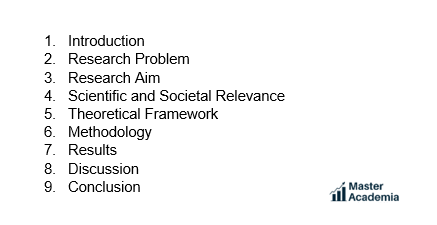
The advantage of this rather traditional format is that it provides information on each thesis chapter. Furthermore, it is relatively easy to prepare.
The disadvantage of this traditional format is that it is very challenging to fit all the information in a – let’s say – 10-minute presentation.
Furthermore, it can result in a presentation that is quite boring for the examiners, who have read the thesis in preparation for the viva.
One interesting way is to structure a viva presentation around the key findings of the PhD research.
For instance, you can select your three main findings which you each connect to the existing literature, your unique research approach and your (new) empirical insights.

A viva presentation structure around key findings emphasises the unique contribution of a PhD thesis, particularly in empirical terms.
A challenge of this structure, however, is to narrow down the presentation to a handful of key findings.
Furthermore, it might be tricky to find enough time during the presentation to discuss your theoretical framework and embed your discussion in the existing literature when addressing complex issues.
A viva presentation structured around key arguments is very similar to one that is structured around key findings. However, while key findings place more emphasis on the empirical data, key arguments operate at a higher level:
Arguments are sets of reasons supporting an idea, which – in academia – often integrate theoretical and empirical insights.
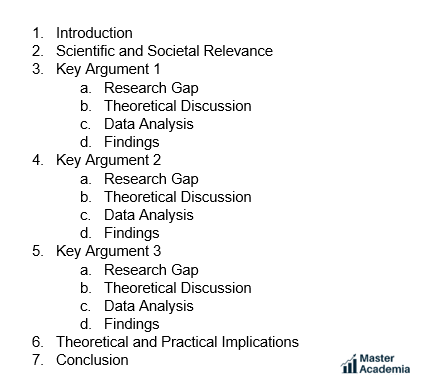
So, for example, your key argument 1 is your stance on an issue, combining your theoretical and empirical understanding of it. You use the existing theory to understand your empirical data, and your empirical data analysis to develop your theoretical understanding.
A viva presentation structure around key arguments is probably the most difficult viva presentation structure to choose.
However, if it is well done, it is probably the most academically strong and advanced way of defending your PhD.
Another common way to structure a viva presentation is around case studies or study contexts.
This structure is only applicable when the PhD thesis includes a comparative (case study) analysis, which is quite common in the social sciences and humanities.
A presentation can, for instance, first discuss the theoretical framework and research approach, then present Case 1, and then Case 2 or more if applicable.
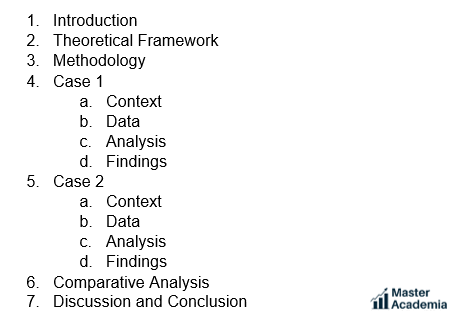
A viva presentation structure around case studies can be easy to follow for the audience, and shed light on the similarities and differences of cases.
However, as always, you need to reflect on whether the structure supports your key message. If your key message does not centre around similarities and/or differences in cases, this is not the structure for you!
Every PhD thesis is unique, and therefore also every viva presentation structure should be unique.
The key to a good viva presentation is to choose a structure which reflects the key points of your PhD thesis that you want to convey to the examiners.
The example viva presentation structures discussed here intend to showcase variety and possibilities and to provide inspiration.
Never just copy a viva presentation structure that worked for others .
Always think about what fits best to your thesis, asking yourself the following questions:
- What is the main message of my PhD that I want to share during my viva?
- How do I develop a crystal clear storyline to bring this main message across?
- How can I structure my viva presentation to support and facilitate this storyline?
Get new content delivered directly to your inbox!
Subscribe and receive Master Academia's quarterly newsletter.
18 common audience questions at academic conferences (+ how to react)
10 reasons to do a master's degree right after graduation, related articles.

10 tips for engaging your audience in academic writing

How to disagree with reviewers (with examples!)

Introduce yourself in a PhD interview (4 simple steps + examples)

24 popular academic phrases to write your abstract (+ real examples)
How to Pull Off Your Thesis Defense With a Great Presentation

You’ve reached the home stretch in your journey toward your post-graduate degree. You’ve diligently studied, researched and performed for years, and all that’s left is your master thesis or doctorate dissertation.
“ All that’s left,” however, might be the understatement of the century. There’s nothing simple about orally defending your thesis, and this final stage often means the difference between a degree and a program that remains incomplete.
Even after you’ve dedicated months filled with blood, sweat and tears defining your argument, researching your support and writing your defense, you aren’t ready to address the academic panel. You still have to design an effective visual presentation, and the slide deck can make or break your entire thesis.
Unsure how to design a stellar slide deck to visually present your thesis or dissertation? Check out the following tips to pull off your master thesis defense with a great presentation:
1. Properly structure your slide deck
Every master thesis defense presentation is unique, but most effective slide decks will follow a similar structure, including:
- Title - Just like a research paper, your thesis presentation must include a title slide. This should include the same information as any other title page: the title, your name, your academic institution, course name and the name of the academic advisor to your thesis or dissertation. That doesn’t mean your title slide needs to look like the start of any other Frankendeck . Instead, add your text atop a relative image, and adjust the brightness to ensure your text pops.
- Introduction - Your thesis presentation should also include an introduction slide, which details the topic of your thesis, the question your research will seek to answer and any additional objectives to your research, as well as the answer or solution you will be defending.
- Literature review - Following your thesis introduction, design one or more slides that review the literature you researched. This shouldn’t be a full bibliography (although that should be included in the accompanying written account of your research), but instead, the slides should list your most relevant research sources. If the information is featured on a slide, make sure you include its source.
- Methodology - Your thesis presentation slide deck should also include a slide (or slides) detailing the methodology of your research and argument. Here you want to describe the type of study— whether it’s quantitative, qualitative or a combination of the two, as well as an explanation of why you chose the method or methods you used. If you conducted original research, you will want to detail the study population, sampling methods and other details pertinent to your studies, while you’ll also want to detail how you analyzed your data.
- Results - No thesis presentation slide deck is complete without dedicating slides to illustrate the results of your research. Be sure to include a description of any data you collected through your research, as well as the results of your analysis of the data. What were your most significant findings?
- Discussion - How do the results of your research support your overall thesis argument? Be sure to include slides that discuss your overall findings and how they relate to your original question.
- Conclusion - Concluding slides should restate your original research questions, represent the results of your research, suggest future research and make any final recommendations.
- Ending slide – Close your thesis presentation with a concluding slide that offers an interesting quote or trivia that makes your audience further ponder your topic, a GIF or animation that recaptures the audience’s attention or even a hypothetical question that opens additional discussion from the academic panel. This is your opportunity to make your presentation memorable.

Thesis Presentation vs. Dissertation
Thesis presentation and dissertation are two terms often used in academic settings related to upper education. While they are related, there are distinct differences between the two, which is important to understand as you begin to structure your thesis defense.
A thesis presentation typically refers to the final oral presentation that a student gives to defend their thesis or research project. It is a formal presentation to explain their findings, methodology, and conclusions to a panel of faculty members or experts in the field. The purpose of a thesis defense presentation is to demonstrate the student's knowledge and understanding of the subject matter and to defend the validity of their research.
On the other hand, a dissertation refers to a lengthy and comprehensive research project that is typically required for the completion of a doctoral degree. It involves in-depth research, analysis, and the development of original ideas in a particular field of study. A dissertation is usually written over an extended period and is expected to contribute new knowledge or insights to the field. Unlike a thesis presentation, a dissertation is submitted in written form and is typically evaluated by a committee of faculty members or experts in the field.
2. Choose which ideas to illustrate
Unless you have an hour to fill with your master thesis defense or doctorate dissertation, you won’t be able to include every idea from your overall research documentation in your slide show. Choose the most important ideas to illustrate on slides, while also keeping in mind what aspects of your research you’ll be able to visually represent.
.jpeg)
3. Define your presentation’s theme
A stellar thesis or dissertation presentation will be professional in appearance, and a cohesive design is an absolute must. Choose what types of typography and color schemes best support your topic.
Instead of adjusting these settings on each individual slide— a tedious task at best— choose a PowerPoint-alternative presentation software like Beautiful.ai that allows you to customize a theme for your entire slide deck. Choose your fonts and other typography, your color palette, margins, footers, logos, transitions and more, and the cloud-based tool will automatically apply those design specifications to every slide you add to the master thesis defense presentation.
4. Design simple and focused slides
You might have a lot of information to present, but when it comes to your thesis presentation— or almost any slide deck for that matter— less is more. Be sure every slide counts by focusing on your main points.
Then, whatever you do, keep your slides simple. Not even an academic panel is going to dedicate much time deciphering a cluttered slide with all too many details. Try to avoid presenting more than one or two ideas on each slide.
5. Include data visualizations
The whole point of your presentation is to illustrate the concepts included in your thesis. Humans are visual creatures and react strongly to imagery, and the panel evaluating your thesis or dissertation is no exception— regardless of how studious and formal the academics might seem. Illustrate the results of your research with colorful and engaging infographics . You don’t have to be a graphic designer to create them, either.
Beautiful.ai users can choose from a host of smart slide templates with data visualizations — including favorites like bar graphs and pie charts , as well as less common options like scattergraphs , flow charts and pictograms . Just input your data and watch as our special brand of artificial intelligence creates the infographic for you.
6. Practice makes perfect
After spending months researching your thesis or dissertation, writing about your findings and designing a stellar master thesis defense presentation, you would hate to see all your hard work be for naught. That’s still a distinct possibility, however, if you don’t also practice your delivery.
Practice, practice and practice some more until you know your master thesis defense like the back of your hand. No academic panel will be impressed by a graduate candidate who stumbles through their presentation or appears to be reading from their notes. Know the contents of every slide, as well as exactly what parts of your overall defense you want to deliver during its display.
Things to keep in mind to help you nail your presentation
The golden rule of any presentation is to keep your audience engaged. You can ensure a more engaging presentation by maintaining eye contact, using appropriate gestures, and speaking clearly. You can also choose to include the audience in your presentation with interactive questions, polls, and slides.
To help boost audience retention, utilize storytelling. Studies show that when facts are presented in the form of a story, people are 22 times more likely to remember them. Talk about powerful.
Last but not least, plan for questions— and not simply by allowing time for them. Watch other thesis defenses delivered at your institution, and consider what types of questions the academic panel might ask, so you can prepare the best possible answer.
Extra credit:
Get started with our PhD Defense Thesis presentation template here .

Samantha Pratt Lile
Samantha is an independent journalist, editor, blogger and content manager. Examples of her published work can be found at sites including the Huffington Post, Thrive Global, and Buzzfeed.
Recommended Articles
Video for sales: how teams can use multimedia to supercharge sales assets across the organization, the ultimate guide to sales and creating winning sales presentations, presentation tips for startups and small teams, what is onboarding and how to do it effectively for your customers and employees.
The Ultimate Guide to Preparing Your PhD Dissertation Defense Presentation
January 12, 2023

Chances are, you’ve been waiting years for this moment: preparing your PhD dissertation defense.
You’ve made it this far in your doctorate journey, so you’ll really want to nail the final thing standing between you and your PhD.
We’ll break down everything you need to know, from what the dissertation defense is to how to prepare and more importantly, succeed.
Here’s our ultimate guide for preparing for your PhD dissertation defense.
What Is a PhD Dissertation Defense Presentation?
A PhD dissertation defense is your chance to defend your work in front of the academics analyzing your research. You might also hear this called a “thesis defense.”
Although the thought of having experts critique you in a cross-examination setting, a dissertation defense is just an opportunity for you to show off your best work .
What Is a PhD Dissertation Committee?
A PhD dissertation committee is a group you assemble to guide you through the dissertation process, from preparation to the revision of your dissertation.
You choose the members of the committee after all the academic work is finalized. Usually, members will be trusted faculty — people you know well who you might consider a mentor.
How to Prepare for Your PhD Dissertation Defense Presentation
Preparing for your PhD dissertation defense doesn’t have to be stressful.
Try using Yoodli , an AI-powered speech coach that analyzes your speaking patterns and identifies areas in which you can improve. By practicing your dissertation defense presentation through Yoodli, you’ll be able to not only improve your speaking, but boost your confidence as well.
For example, you can take an in-depth look at the filler words you use, including which ones come up the most often and precisely how often they come up.

Here are three more tips for preparing your PhD dissertation defense.
1. Don’t wait around.
One of the best things you can do for yourself when preparing your PhD dissertation defense is to start the work early. You won’t regret starting “too early” like you would regret starting the preparation too late in the game.
Designing your presentation slides will take time and isn’t something you can slap together in a pinch. Right after your thesis is finalized, start on the slides. Your aim is to impress the committee with a thought-out, clear presentation that presents your work in a good light.
2. Practice, practice, practice.
It doesn’t matter how confident or comfortable you are with regard to your work and the actual PhD dissertation defense — you need to practice like your life depends on it.
Be sure to practice not only the presentation, but also your body language, like hand gestures . You don’t want to seem too stiff or anxious during your dissertation defense, and practicing all these elements at once gives you an idea of what you need to work on.
You’ll also want to work on your tone, to make sure you don’t come off as sounding monotonic . You want the committee members to feel interested and engaged.
Taking one of Yoodli’s free public speaking courses — such as the fundamentals of public speaking — can also build on your confidence and make you feel more comfortable during the dissertation defense.
Check out Yoodli’s 10-minute course here:
3. Check out other candidates’ presentations.
Sometimes, universities will offer open PhD dissertation defense presentations. If your university is one of them, it’s a great idea to attend a few . If your university doesn’t offer open dissertation presentations, check out other local universities that might offer these.
Watching other candidates’ presentations can help you not only get a firsthand look at how a presentation should (or shouldn’t!) go, but also to affirm that dissertation defense presentations aren’t as awful and scary as you might think they are. You might even get some insight or a few ideas for your own presentation while you’re at it.
The Bottom Line
Preparing for your PhD dissertation defense presentation doesn’t have to be overwhelming. After all, it’s all part of your doctorate journey . With preparation and practice, you can use this opportunity to shine and show off your best work.
Start practicing with Yoodli.
Getting better at speaking is getting easier. Record or upload a speech and let our AI Speech Coach analyze your speaking and give you feedback.

- How to Give a Presentation as A PhD Student
- Doing a PhD
At some point in their career, most researchers will be asked to give a presentation at a conference. These podium talks can be a brilliant way to promote yourself as an academic and also to disseminate your work to a wider audience. Standing up and giving a talk to a large audience can feel scary, particularly if you feel under-prepared. However, with enough preparation and practice this could become an enjoyable experience and maybe even one you look forward to!
Here are a few tips from us to help you with preparation for your next (or first) presentation.
Keep It Simple
Typically, any talk you give will be accompanied by a series of slides. The key thing to remember here is ‘less is more’. Keep the message on each slide very clear with minimal text and ideally an image on every slide. Remember that these slides are designed to support what you’re talking about rather than being a script to read from.
Have a Structure
Prepare your slides with a logical structure in mind. If you’re presenting an experimental study, this may be as simple as: Introduction, Methods, Results, Discussion and Conclusion. Think about what one thing you want the audience to take away from your talk – what’s the take-home message? A common mantra that’s used by many researchers is to (1) tell the audience what you’re going to tell them, (2) tell them and (3) tell them what you’ve told them. Simple!
Practice, Practice, Practice
There’s really no better substitute for building confidence in giving your talk than by practising it as much as you can. That’s not to say that you should learn it word for word and simply repeat from memory, but it should feel very natural by the time you come to present. A great idea is to write out a script of what you’d like to say and then amend it as you read it out aloud – you’ll find the way you structure your sentences or the words you use may differ slightly as you present out loud versus just writing down in text form.
Practice by yourself as you’re developing your thoughts and the flow of your talk but make sure you also practice in front of others, such as those in your lab, your supervisor and your friends and family.
It’s All in The Delivery
You know what you’re going to say, make sure you also practice how you’re going to say it. Make a conscious effort to speak a little (emphasis on the little!) slower than you normally would. Don’t forget to breathe and be happy – this is a chance to show off the great work that you’ve been doing. Speak clearly and not too quietly and try to connect with your audience – think of this as a discussion you’re having with them about your research. If you can, try to arrive at the presentation hall before others arrive so you have an opportunity to stand at the podium and visualise yourself giving your talk – this way when you go up to present, the environment will be a little more familiar to you. Enjoy it!
Browse PhDs Now
Join thousands of students.
Join thousands of other students and stay up to date with the latest PhD programmes, funding opportunities and advice.
Home / Free PowerPoint Templates / Minimalist PhD Dissertation
Minimalist PhD Dissertation PowerPoint and Google Slides Template
- Share this template
Minimalist PhD Dissertation
Simple, clean, and classic, these minimalist PhD dissertation slides are great as a Google Slides template, PowerPoint theme or Canva template. Keep the layout as it is or add, delete, and re-order slides. Choose your own color scheme and font combination. Upload images, photos, and illustrations. Easily add charts, graphs, and other figures. Fill out ready-made slides for your introduction, research methodology, results, discussion, and other core parts of your dissertation. Check out the handy How-To page at the start of the deck for tips on using these slides as a Google Slides theme, PowerPoint template, or Canva theme.
Features of this template
- 25+ ready-made slides to customize as you see fit
- Hundreds of charts, frames, lines and shapes to choose from
- Handy animation and transition features for each slide
- Easy downloading or sharing in a wide range of formats
With Canva, you get even more creative freedom:
- An easy drag-and-drop tool to help you add graphics
- Set-and-forget brand color and font combinations
- Page animation features, emojis, color palettes and font sets
- Millions of professionally designed images and photos
- Pre-recorded Talking Presentation tools to help you practice
- A notes feature for adding talking points to your design
- Searchable videos, soundtracks and other audio clips
- Easy collaboration with friends, coworkers and family
People who find this template also visit
- Free PowerPoint Templates
- Free Google Slides Templates
- Customizable and Feature-Rich Canva Templates
- Editor's Choice of Best Presentation Templates
- Popular Presentation Templates
Related templates

Classic Diploma Theme with Elegant Borders and Frames

Illustration Blue Ocean

Simple Agribusiness Newsletter

All About Continents Poster

Vintage Education Pack for Students

Simple Industrial Engineering Thesis Defense
Supercharge your slides with canva..
Add dynamic GIF's, captivating videos, and stylish photo frames directly from Canva's royalty-free asset library effortlessly. Share or export anywhere, be it PPT or Google Slides.

Magic Write
Go from idea to your first draft *in seconds with Magic Write, our content generation tool powered by OpenAI.

Image generator
Dream it up, then add it to your design. Watch your words and phrases transform into beautiful images.

Background remover
Click to remove image backgrounds, perfect for product photos, headshots, or transparent PNGs.

Export your results to PPT and Google Slides
Canva allows you to export to a perfect PPT or Google Slide when you are done.
Learn how to export from Canva to other formats
Canva to PowerPoint Canva to Google Slides
- 1. Open the template in Canva .
- 2. In Canva click on "Share" at the top right-hand corner, then click "More"
- 3. Scroll down further and you will see "Google Drive" button.
- 4. Choose the "PPTX" or Powerpoint file type. Make sure to click "All Pages" on select pages.
- 5. Your template is exported to Google Slides!
- 1. Click on Canva button to open the design.
- 2. Once the Canva file is opened, click on "Share" at the top right hand corner, then click on "Download"
- 3. Once you clicked on "Download" , choose the "PPTX" or Powerpoint file type
- 4. Your template is now ready for use on Powerpoint!
Professional designs for your presentations
SlidesCarnival templates have all the elements you need to effectively communicate your message and impress your audience.
Suitable for PowerPoint and Google Slides
Download your presentation as a PowerPoint template or use it online as a Google Slides theme. 100% free, no registration or download limits.
- Google Slides
- Editor’s Choice
- All Templates
- Frequently Asked Questions
- Google Slides Help
- PowerPoint help
- Who makes SlidesCarnival?
Home Blog Presentation Ideas How To Do a Proper Thesis Defense Using the Right PowerPoint Presentation
How To Do a Proper Thesis Defense Using the Right PowerPoint Presentation
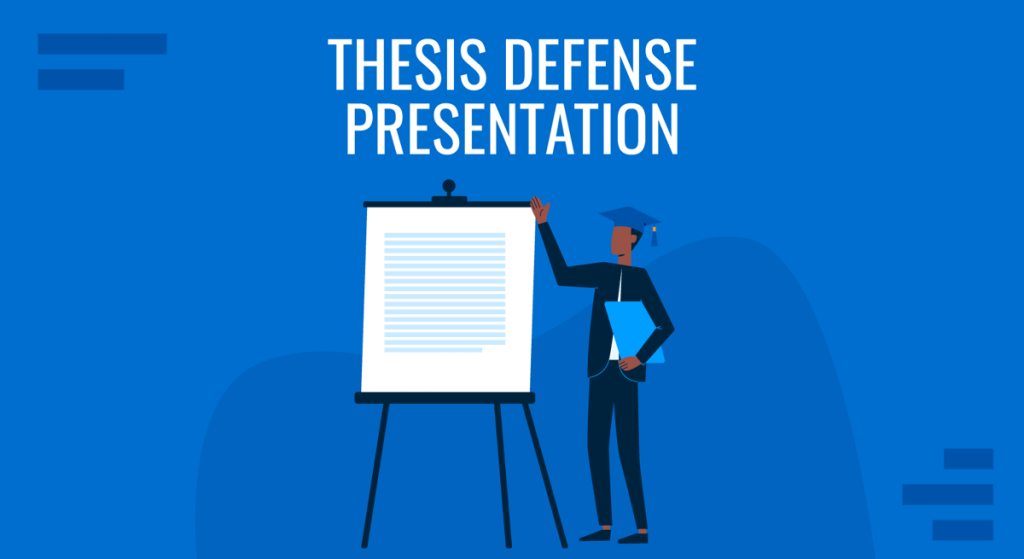
Writing a thesis is stressful, but preparing an oral defense can be even more painful. But it doesn’t have to be; with proper preparation and a good presentation, you will be able to better equip yourself comes time to present your thesis defense.
But what makes a good thesis defense?
A proper presentation helps you with your thesis defense because it helps you capture the panels’ attention and gives you cues and reminders on what to say as well.
It also helps keep your data organized while visually looking good and provides a flow structure for the rest of your presentation.
In today’s article, we will be giving you The Right PowerPoint Templates for Your Thesis Defense and a powerful outline composed of best practices and layouts specifically designed to help you defend your thesis in both written and oral presentations.
In the next segments of this article, we’ll walk you through the most feasible process on how to ace this kind of presentation.
Let’s dive into the outline of what makes a great thesis defense.
Thesis Defense Overview
Similarities.
- Type of Degree
Thesis and Dissertation Distinction Varies on Location
Three most common thesis defense myths, how to use chatgpt to structure your thesis.
- Introduction
- Literature Review
- Methodology
- Acknowledgements
- Questions and Answers
- Contact Information
- Tips During Your Oral Defense
- More Quick Tips on How to Present
A thesis defense is composed of two parts – a thesis and a defense.
The thesis, according to Grad School Hub , represents a student’s collective understanding of his or her program and major.
Universities often include a thesis in every course as one of the final requirements to earn a particular graduate or postgraduate degree.
The thesis, however, isn’t just a mere requirement.
It helps the students to grow out of their shell from their respective discipline and give them the opportunity to present all the findings of their study.
Moreover, some people think a thesis is just a long essay, but it’s not. Unlike an essay, a thesis needs to assert something.
This can be considered one of the most crucial research documents that a student makes during their academic schooling .
On the other hand, defense is the presentation of the pieces of evidence to support and prove your research.
It’s the most essential part of the thesis process.
Your presentation has to be prepared to answer questions from members of the committee and any other panel present, and it’s your job to convince them and defend your thesis with ample proof.
Prior to presenting, you have to carefully determine what appropriate evidence should be presented before the panel, depending on what thesis you have to defend.

Thesis and Dissertation Distinguished
A thesis or dissertation is usually required to complete a particular graduate degree. These two words are often used interchangeably by most students when referring to research studies.
But while being almost similar in format or structure, it’s worth noting that they have significant differences that set them apart from each other.
The very reason why thesis and dissertation are treated the same is that these two are both extensive papers. Not just merely long essays like what others are claiming.
Both of these papers are extensive. This is why students are given ample time, usually the entire last semester of the last year of study, to complete all the requirements and finally acquire their degree.
With regards to structure, both papers are very similar with few differences.
Differences Between Thesis and Dissertation
One of the significant differences between the two is to whom the paper is assigned. A thesis is usually required for those students earning a bachelor’s or master’s degree. While a dissertation is for those, who want to obtain a doctorate degree.
However, not all students taking a master’s degree are required to make a thesis. Prior to their enrollment, they have been given a choice of whether they’ll go for a non-thesis program or with a thesis.
Those who have a plan to escalate their degree to a doctorate eventually should take the path of a thesis. This is to prepare themselves for a more extensive dissertation requirement as doctorate students. Otherwise, they will be only limited to earning a master’s degree.

But above all, the most significant difference between the two papers is the purpose for which it is written.
A thesis, like what has been mentioned above, is being done by students obtaining a bachelor’s or master’s degree and has the purpose of testing their understanding of the discipline they’re engaged with.
A thesis is focused on obtaining technical expertise.
On the other hand, a dissertation is made for students to come up with an original study that other researchers haven’t already studied.
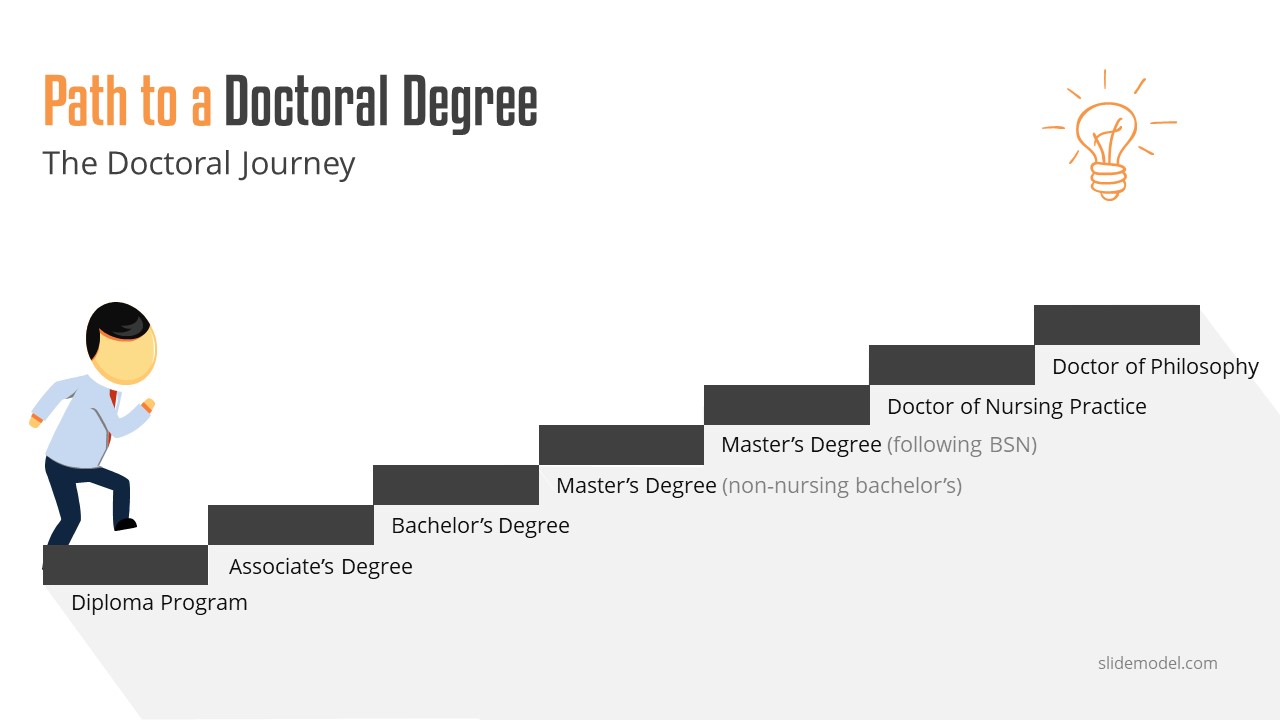
USA: In the United States of America, they consider a thesis shorter than a dissertation. In fact, aside from being a requirement to graduate in college, a thesis is now also inculcated in master’s degree programs. And since the dissertation is more extensive, the thesis is treated as preliminary in gaining a doctorate degree.
Europe: The distinction between the two papers is almost opposite to that of the USA. In Europe, a dissertation is only a broader research study from a post-graduate program and not the making of original research. Instead, educational systems in the said continent treat the doctoral thesis as a more elaborate paper writing.
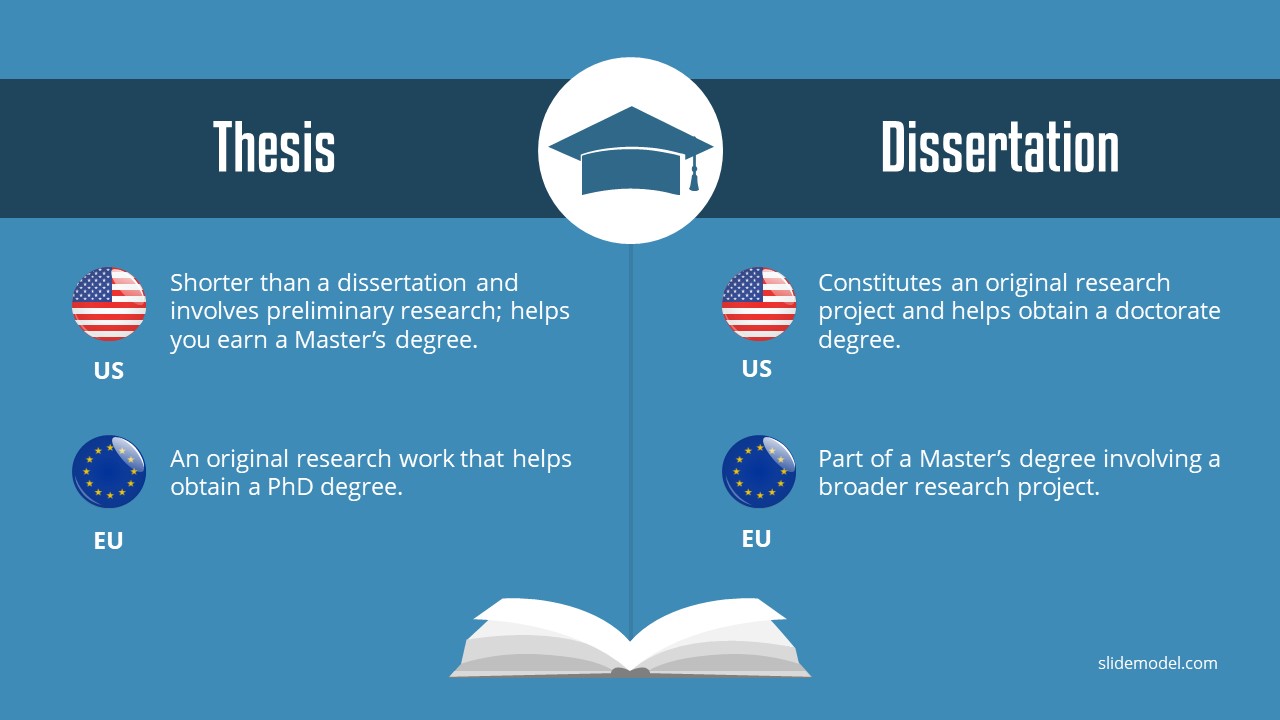
The difference between a thesis and a dissertation might not seem that big, but it’s important that we know what makes them different.
If your upcoming defense gives you pressure and uneasiness, it could be cause you are not sure what to expect. Today we will dispel three common thesis defense myths that will help you be more confident in your presentation.
“Answer all the questions correctly. Otherwise, your thesis won’t get approved.”
You are expected to have a focus on your research.
That being said, you have to study each part of your thesis, every detail, and even your sources.
You have to study and practice how to effectively deliver your presentation.
But don’t overthink to the extent that you’re stressing yourself to know everything perfectly.
Don’t overstress if you can’t answer one of the questions, this doesn’t necessarily mean the committee won’t approve your thesis.
You should know that research is a continuous study.
So you should expect that your committee will always be able to find a gap in your study to fill in future related research .
So in times you don’t exactly know the answer, admit it, and you’ll learn as they give their sides or suggestions.
Making up an answer will only displease your committee, so it’s to be upfront, honest, and transparent.
“The committee is just there to find holes in your study. They don’t care about you.”
One of the typical descriptions students have of the committee is that they are just there to poke holes in your thesis.
Going in with this perspective makes standing before them a nerve-wracking experience.
They’re not your enemy.
In fact, they are there to help you polish your study.
They might challenge you with difficult suggestions and tricky questions.
In the end, they will walk you through the process to come up with better results that won’t only benefit you but also your research.
They care about you and your study, and they’re ultimately there to make your thesis and the research better. Separate yourself from your work look at it objectively, and don’t take their comments personally .
“If your thesis defense isn’t successful, you have to start your thesis all over again”
An unsuccessful defense is one of the worst-case fears most students have.
One thing that you should be aware of is when you aren’t able to please your committee, you don’t need to start a new thesis again or go back to square one with your existing paper.
It’s unusual that your committee will ask you to change your topic and start from scratch again.
The fact that you’ve been permitted to defend your study means your research is almost complete.
They might suggest further details or ask you for minor revisions, and that’s normal.
But overall, you need to go into this defense thinking that your presentation will be successful. Otherwise, you are already setting yourself up for failure with the wrong mindset.
Remember that positive thoughts attract positive results.
Thesis Defense Presentation Structure and Slides Content
We can use language learning models like ChatGPT to help us curate the structure of our thesis presentation. Let’s see a step-by-step solution on how to apply this.
Step 1: Define the thesis topic and research questions
You can set the environment for ChatGPT to work by explaining what your thesis is going to cover and which specific questions you aim to address through the course of that document. This gives ChatGPT the context from which it shall formulate the structure. A prompt can be written like this:
“Take the role of an academic professional who shall help me to write my thesis. This thesis is going to cover the topic of (insert topic), and through its course, I want to answer these questions: Question 1 – Question 2 – Question 3 – Consider this information as the starting point for this chat.”
Step 2: Ask for an outline
With the previously provided information, ask ChatGPT to generate an outline for your presentation. If some of the points listed in the output don’t convince you, then chat with the interface until you reach a final outline. Then, ask to elaborate on each specific point for information or cues you may have overlooked.
Step 3: Ask ChatGPT which content should you place per slide
Instead of debating how are you going to trim your thesis into a presentation format, ask ChatGPT to do the decision process for you. You can be as specific as asking how many words per slide, how many slides should the presentation have, if you need any visual element, etc.
N.B.: We don’t recommend using ChatGPT to retrieve academic references as, in some cases, it can provide faulty results. You can ask if any facts on this presentation need to be checked or similar questions. ChatGPT is a powerful tool, but it shouldn’t be considered a bible, so be extra cautious about grabbing content directly from its outputs.
1. Title Page
This slide should contain the information that is provided on the title page of your hard copy . Here is an example of title page or cover slide for your title defense or thesis presentation.

- The title of your research paper
- Where you are studying
- Name and details of your course
- Name of Adviser
2. Introduction Slide
Your introduction slide should provide the committee with an idea of the following:
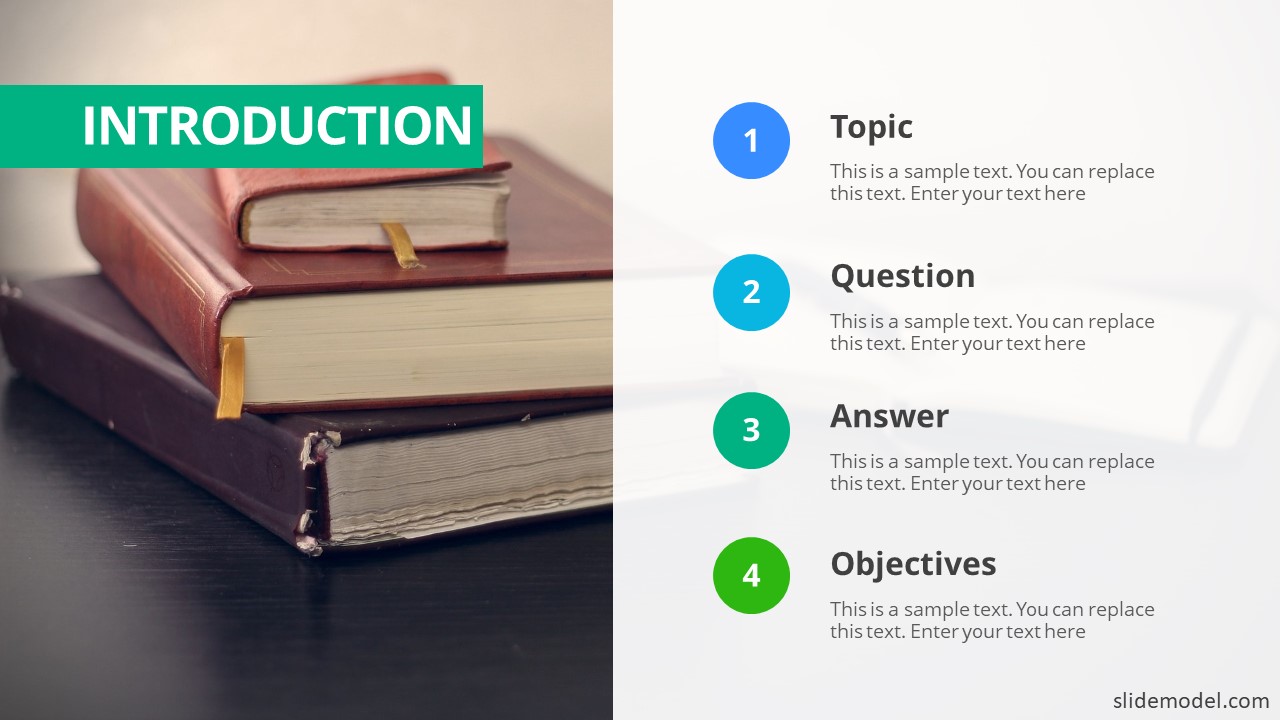
- What is the topic area that you are investigating ?
- What are the specific research questions that you set out to answer?
- Why is this question important to answer?
- What were the objectives of your research?
3. Literature Review Slide
It’s not necessary to cover everything that’s currently understood in the available literature. You may want to present the following content under a Literature Review slide:
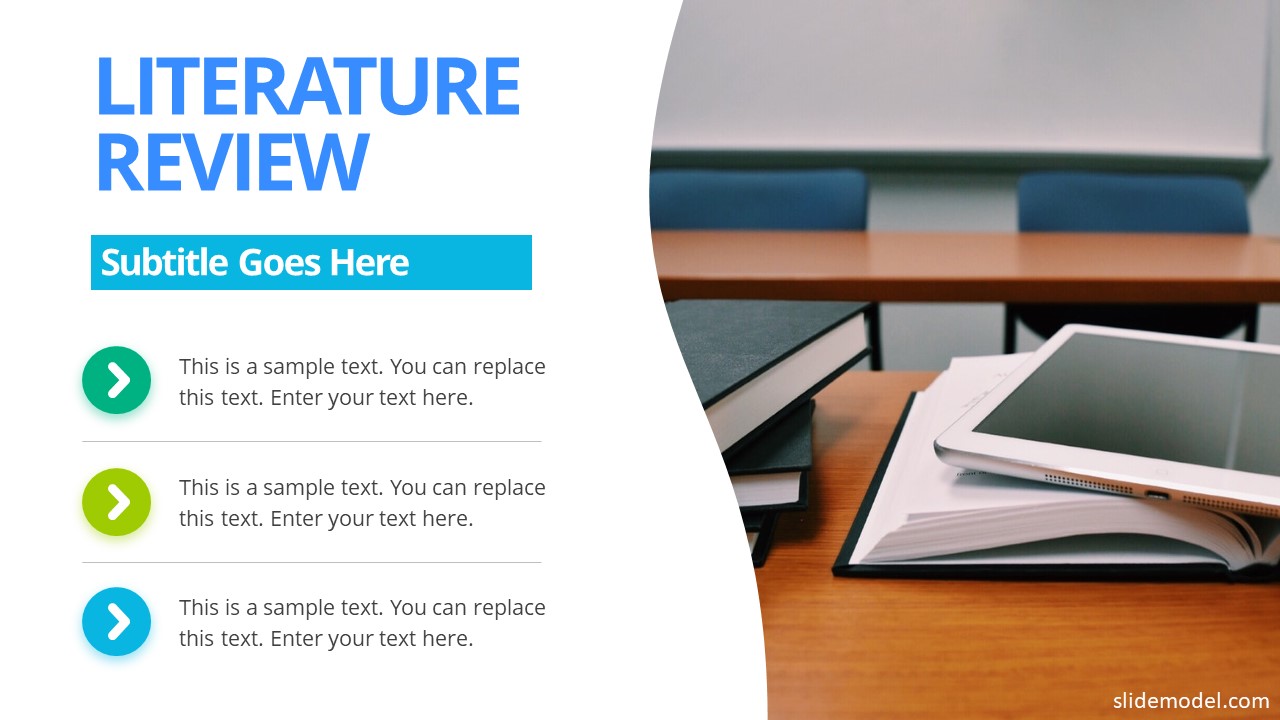
- Relevant current research that is close to your topic
- Different theories that may apply to your specific area of research
- Areas of weakness that are currently highlighted
4. Methodology Slide
Make sure to touch the factors below within your process, and include the following in the Methodology slide:

- The type of study you have conducted: qualitative, quantitative, or mixed
- The methods that you chose and why
- Details of the population, sampling methods, and other information
- Provide information regarding how you have analyzed the data that you have collected
5. Results Slide
This part should give the committee/audience a good understanding of what you’ve discovered during your research. The statistics & results slide could include the final results of your analysis, here is an example:

- An overall description of the data that you collected during your research
- The results of the analysis that you have done on that data
- What were the most significant findings from your data
6. Discussion Slide
Highlight here the meaning of the findings in relation to your discipline program and the research that you have done:
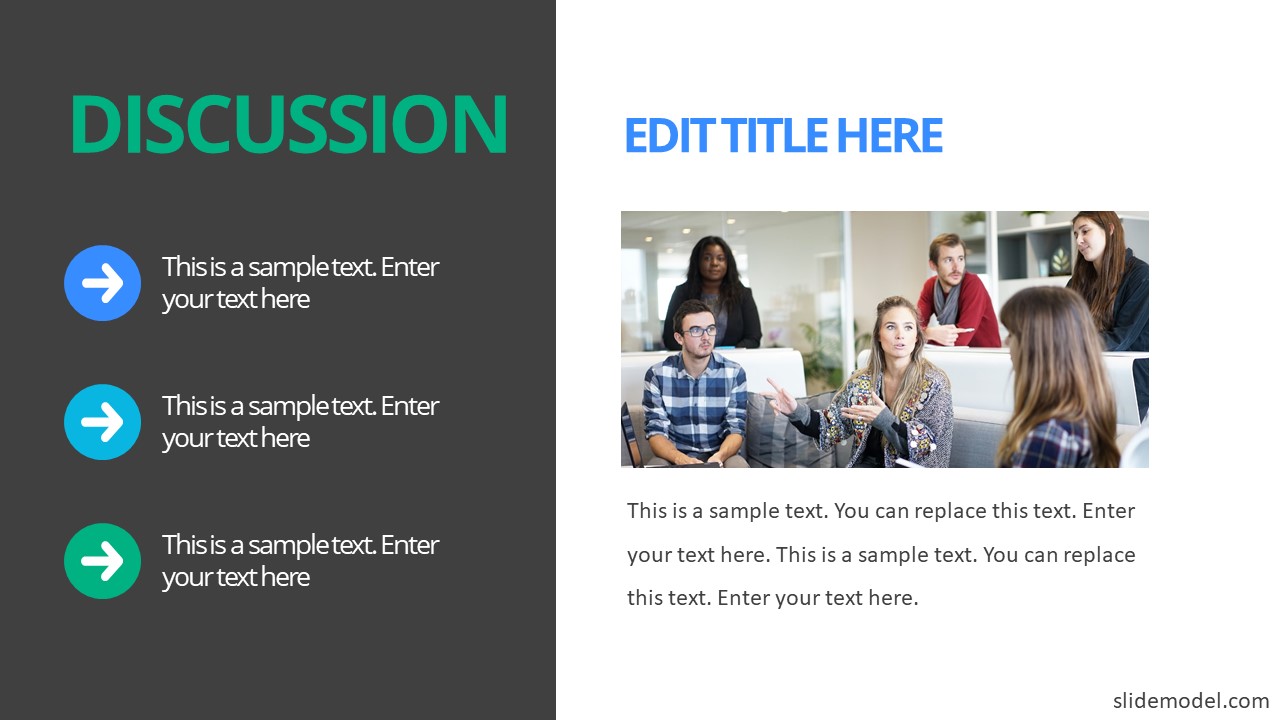
- What are the major findings, and what do they mean with regard to your research
- How do these findings relate to what others have found in the past
- How can you explain any unusual or surprising result

7. Conclusions Slide
You have to end your presentation with a conclusion summarizing all that you have found within your research. Here is an example of a Conclusion slide in a Thesis presentation:

- Restate your research questions
- Show how your results answer these questions
- Show what contribution you have made
- State any limitations to the work you have done
- Suggest future research
- Make any recommendations
See Also: How to Create a Great Investors Pitch Deck and Close the Deal
8. Acknowledgements Slide
Express gratitude to your advisor, committee members, peers, and others who supported your research journey. This slide provides a moment to acknowledge the collaborative nature of academic work.
9. Questions and Answers Slide
Dedicate a slide for audience questions at the end of your presentation.
Encourage engagement by inviting questions from the audience.
Be prepared to provide clear and concise responses to inquiries.
10. References Slide
Include a slide listing your cited sources throughout your presentation.
Use a consistent citation style (APA, MLA, Chicago, etc.).
The References slide demonstrates your thorough engagement with existing literature.
11. Contact Information Slide
If you’re open to further inquiries or collaborations, consider adding your contact information.
Include your email address or relevant professional social media handles.
How to use SlideModel AI Presentation Maker for your Thesis Presentation
If you want to save hours of manual time, you can leverage AI tools to make your thesis presentation. The best part of integrating AI tools into our workflow is that we can pair them to get even better results than we expected. With SlideModel’s AI presentation maker , users can create an entire slide deck by introducing these variables:
- Topic of your thesis
- Number of slides to include in your thesis presentation
- Outline checkup
And that’s it! Download the AI-generated presentation in PPTX format or for Google Slides, and edit it if you require adding some extra content. The core elements are already done, and you can save countless hours of hard work.
Tips During Your Oral Defense!
Review your materials.
Even if you already feel confident with your upcoming presentation, you still need to review your materials.
You can bring the hard copy of your thesis with you during the defense, but you don’t want to get lost in your presentation when you forget some specific details and have to scan your papers.
You should know your paper in and out.
Rehearse Your Presentation
It’s not wrong if it sounds like a script when you speak in your oral defense. It’s expected and understandable.
You need to practice your presentation, especially when there’s a time restriction given to every presenter.
You only need to prepare enough slides that would fit your time limit. A hundred slides aren’t suitable for a 15 to 20-minute presentation, nor 10 slides for an hour of defense.
Your rehearsal will be more effective if you practice it in front of an audience.
Note: You will experience complete silence in the defense room. You might feel awkward because, most of the time, you’re the only one speaking out loud. This is completely fine, and it’s something you should practice in rehearsal should you be afraid.
Narrow the Presentation of Ideas
Regarding your slides, you don’t have to include everything that’s in your paper. You should narrow down your ideas to the main points and the most important details, such as the statistics and findings.
If the members of your committee think you lack details or they want to hear a further explanation, they won’t hesitate to ask you.
Prepare for the Unexpected Questions
The panel tends to challenge the presenters, usually through some hard questions.
Its aim is how well do you you have done your research and how prepared you are.
But as long as you know the ins and outs of your paper, you shouldn’t lose your confidence regardless of which questions they ask.
Just keep in mind that what you’re saying in your oral defense is not in conflict with what is written on the hard copy you provided them.
What To Do When You Don’t Know the Answer
If the committee asks you a question and you don’t know the answer, don’t make up a baseless answer.
Baseless means out-of-context answers or something without proof or backup.
How To Deal With The Nervousness
The committee expects you to be nervous. Of course, it’s normal.
However, one effect of being nervous is the changes in your behavior.
There’s a tendency for you’ll talk fast, which will make it hard for the committee to understand you.
It might also cause you to have a mental block.
So try to slow down. Take a deep breath.
Inhale, exhale. Remember to breathe!
It’s OK to pause, and it’s OK to take your time; it’s more important that the committee clearly understands what you are trying to articulate.
More Quick Tips on How to Present!
- Introduce yourself at the beginning
- Introduce the title of the presentation
- Don’t read your notes if possible
- Don’t speak too fast
- Put an emphasis on what you’re saying so you don’t sound monotonous
- Look at your adviser once in a while for possible signs
- Stand on the right of the white screen if you are right-handed so you can easily refer to the slide without giving your back to the committee
- Face the audience when you talk
- Keep an eye contact
- Make sure to keep attention to the reactions of the committee and don’t forget to react in turn
We hope you enjoyed this article on how to do a proper thesis defense and how to best prepare for one using proven tips and techniques to help you get through this. Hopefully, after your defense, you will be set as the one in your class to deliver an inspiring graduation speech for your peers. If you have value, please remember to share this article. We also recommend you read these Thesis Statement Examples for inspiration to create your own professionally.
1. MasterDoc PowerPoint Template

Creating a Thesis presentation should be a straight forward task; based on your thesis document and following the tips described above you have a high level structure already outlined. The MasterDoc PowerPoint template provides professional layouts with texts and image placeholders; so you can create document like slides using your thesis defense as your content. This template is ideal for a highly detailed documents, where visuals and words unite to illustrate one concept per page. The result is an asset that can be read and digested more quickly than either your thesis document or a presentation created for assisting a speech. A document created with the MasterDoc PowerPoint templates is meant to be printed or distributed, read on screen without the accompaniment of a presenter or used in an e-learning platform as pure learning content.
Use This Template
2. Thesis Presentation PowerPoint Template
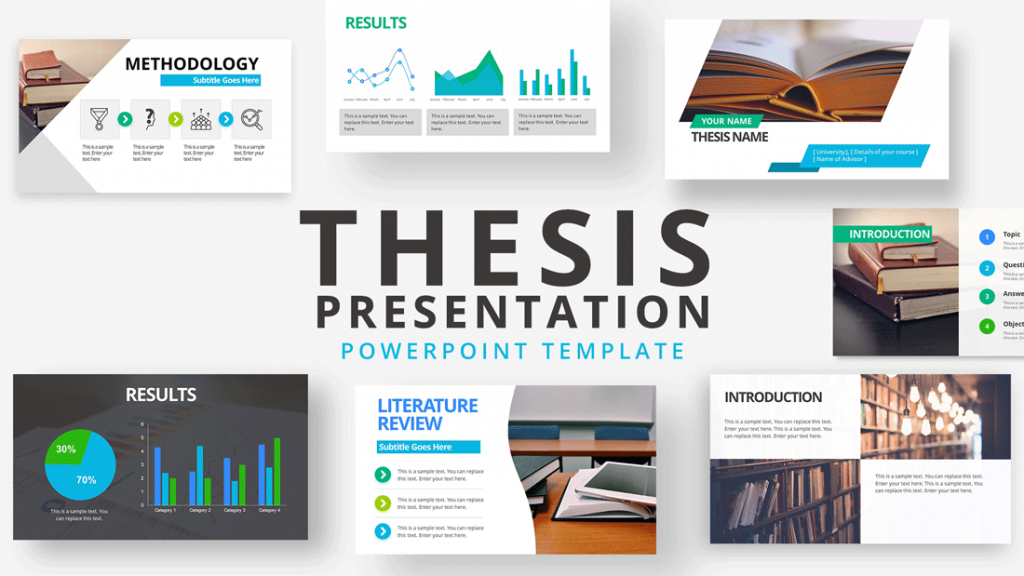
You had invested a considerable time researching, testing hypothesis and confirming your thesis. Craft your thesis presentation with the same level of detail you applied in your work. Using the Thesis Presentation PowerPoint Template you will focus only in your content and your message. The layouts, images,design and structure will be taken care by the template.
3. Master Thesis PowerPoint Template

The Master Thesis PowerPoint Template is a professional document designed for postgraduate degrees presentations. It provides simple sections that follow the structure and best practices of traditional research thesis presentations. Starting with the introduction to the theory and state of the art scenario; following with hypothesis research and its findings and concluding with the confirmation or negation of the initial thesis statement.
4. Essay Outline PowerPoint Template

Your thesis defense can be accompanied by an essay, that states your thesis and argues about it using several supporting paragraphs. This kind of document is ideal to be an intermediate step between reading assisting to the thesis presentation and reading the complete thesis documentation. It has more information that your thesis defense abstract, but does summarizes the supporting evidence and examples that allows the argument of each idea behind the thesis. You can use the Essay Outline Template to present your Essay outline and create an essay linked to your thesis defense documentation.
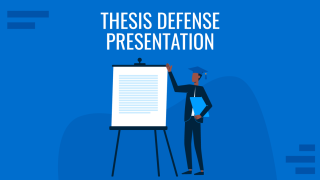
Like this article? Please share
Academics, Degree, Dissertation, Doctorate, Education, Faculty, Master, PhD, Student, Thesis Filed under Presentation Ideas
Related Articles

Filed under Presentation Ideas • November 9th, 2023
How to Create and Deliver a Research Presentation
Presentation is one of the final steps of a research endeavor. Learn how to make and deliver a research presentation using our templates and tips.

Filed under Education • September 10th, 2023
How To Write An Essay? – Where to start?
Do you wonder How to write an essay ? Start with the essay structure. This post describes the standard essay structure with its content, and which essay types are popular. Develop your writing skills using the best practices of Essay Structure.
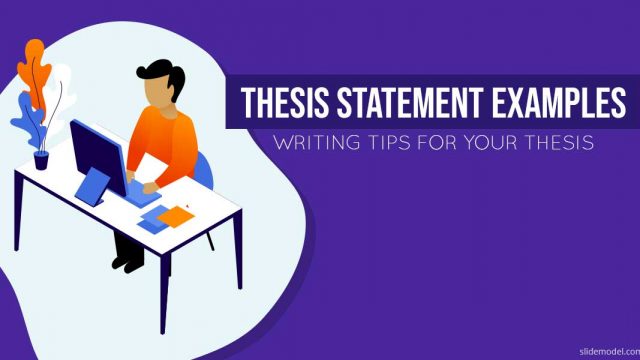
Filed under Education • September 2nd, 2023
Thesis Statement Examples
What makes a good thesis statement? Simple answer, precision and enough evidence to support your statement. In this article we analyze what are good thesis statements with examples.
36 Responses to “How To Do a Proper Thesis Defense Using the Right PowerPoint Presentation”
Great job! This has made my thesis presentation a whole lot easier.
Excellent !!!!!
Now I feel I’m quite confident on how to do my dissertation presentation properly and how to defend it. I will share that with other friends and colleagues.
Thank you so much for your kind help.
Best regards, Awad
Thank you for such a valuable guide.
it was very helpful
Thanks a bunch for the general summary for thesis defense with all related information that we might have to know. Great job!
Great tips.
i have proposal defense in two days and im so nervous right now! reading this is helpful in some ways thankyou!
It’s very helpful and understandable. Easy steps to follow.
I found it very helpful to refresh and make my self ready for my defense!
Thank you a lot this article. It’s really helpful!
Naveen Kumar S: Thank you its very Helpful. I appreciate all your effort this is very useful.
Very important and interesting so go on thank you
I really like it. In the near future I am going to present for the MA thesis. Therefore, it will guide me a lot. If you can please attach with this email the detail.
I do like the article as it proves to be valuable and worthy. I enjoyed reading every single note. It helped me feel at ease and have confidence when my viva day takes place. THANK YOU SO MUCH.
Appreciate your Assistance
Thanks a lot for the gist
Thank you so much, I got full information and knowledge.
This has made me look forward to my thesis defense. Thanks a lot
Very useful
thank you very much for your best information
Thank you very much the article is full of knowledge on Thesis as well as dissertation defense. Big Up!
I am appreciative. Well informative and educative.
Thanks immensely for these wonderful tips on presentation during defense. I personally found more useful to me as I prepare to defend my Master Dissertation.
Thank you very much! I now feel more confident.
Thanks for your good self overall usability of the Participations motivated points and contribute significantly in thesis defense practices. Best wishes to one and All
Happy To Help.
Thank you very much. As I am pursuing for my PhD in Leadership, I got it so meaningful and worth having.
Your tips on What a Thesis and Dissertation are, are on point. I have fully understood their differences and similarities. I have also noted the killer way of summaring a Power Point Presentation. Slidemodel.com…you are just a force to reckon with. I need more information…in case you have models you can share with me and those interested in this subject covered.
Thanks a million times for your timely guidance. Just preparing to do my PhD Thesis defense.
this was very, very helpful…Thank you!
Highly appreciate your effort to deliver what a student is looking for. I find your article really helpful and to the point. Thanks !
Regarding to my P.P, I’ve understood so many issues from this. Thankyou!
i got it as it is so important for my deffence presentation, thanky you very much
This Material was very hopeful and encourage any student who prepare any presentation relation with thesis. It also combined more encauragable and it enhance presentation!
Thought provoking content Thank you.
Great comments. very helpful
Leave a Reply
What’s it for?
Free thesis defense presentation templates
Bring your research to life and impress the examining committee with a professional Thesis Defense Presentation template. Defend your final year project, Master’s thesis, or PhD dissertation with the help of free slides designed especially for students and academics.
Presentations
Thesis defense
All presentations
Pitch decks

Psychology presentation

Higher education summary

Higher education process list

Higher education teaching guide

Women's presentation

Flow higher education thesis

Dynamic higher education thesis

Research project presentation

Structured higher education thesis

Higher education weekly planner

Health higher education thesis

Higher education microsite

Research group guide

Higher education portfolio

Harmony higher education thesis

Higher education comparison

Digital higher education presentation

Academic review

Learning micro-course mobile

Digital presentation

Higher education academic calendar

January higher education academic calendar

Balance higher education thesis
Goal & objective tracker

Essential presentation mobile

Art learning unit

Higher education presentation

Higher education comparative table

Audio tutorial

Biography presentation

Subject portfolio

Digital projects presentation

Modern presentation

Genial learning unit

Infographic presentation

Audio and podcast gallery
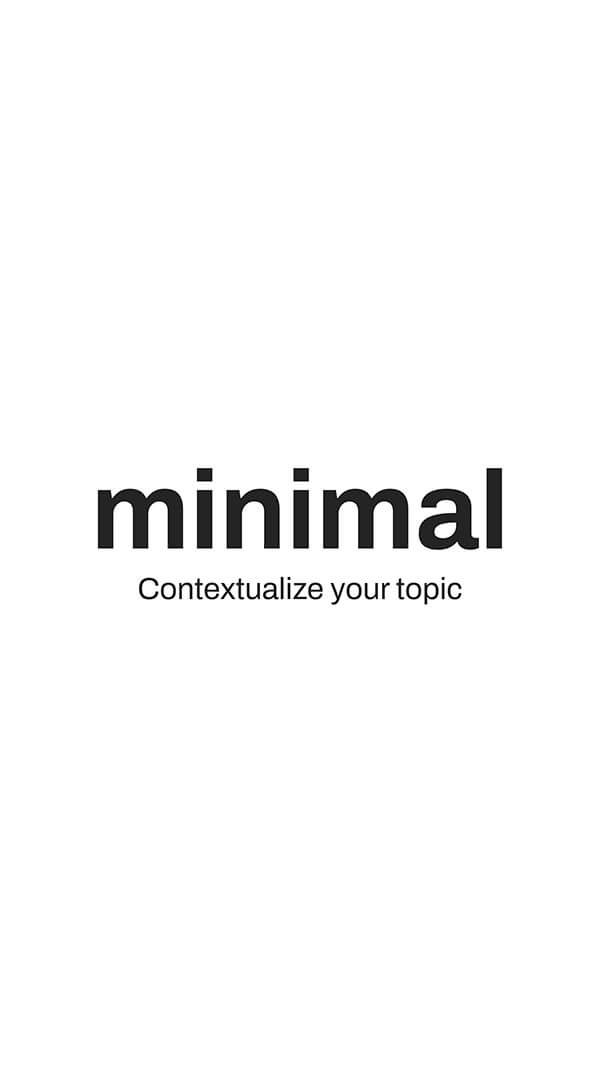
Minimal presentation mobile

Subject Presentation

Visual Presentation

Academic Presentation

Desktop Workspace

Basic Presentation

Color and Shapes Presentation
What’s a thesis defense presentation?
As you approach the end of grad or postgrad studies, you’ll probably be required to deliver a thesis defense presentation. This takes place during the final semester and involves speaking about your thesis or dissertation in front of a committee of professors.
The word “defend” might sound intimidating, but it simply means answering questions about your work. Examiners want to see how knowledgeable you are about your field and if you can back up your arguments with solid and original research. Some departments invite students to a pre-defense, which is like a dress rehearsal for the main event.
If you’re defending your doctoral thesis or dissertation, the event will be more formal than at Master’s level. In some universities, this is called a PhD viva, which comes from the Latin viva voce, meaning “by live voice”. Basically, it’s time to speak about the 80 thousand words you’ve written! As well as your supervisor, the panel will usually include visiting academics from other institutions. If it’s an “open defense” it will be open to other students and members of the public.
The format varies between different universities, but a thesis defense usually starts with the candidate delivering a short presentation accompanied by slides. This is followed by a question and answer session with the panel.
How do I design slides for my thesis defense?
The secret to a good thesis defense presentation is a well-designed slide deck. This will act as a visual aid and starting point for the conversation. Structuring your points and illustrating them on the screen will help you present more confidently.
If the prospect of creating a thesis presentation from scratch is daunting, check out Genially’s free thesis defense templates. Each design has been created by professional graphic designers in collaboration with students and academic experts.
Choose from hundreds of examples with preset color palettes and easy-to-edit slides. In a few minutes you can outline the content of your thesis in an impressive visual format. No artistic skills required!
How should I structure a thesis presentation?
When you create a thesis defense presentation, the first thing to remember is that it should be short and concise. There’s no need to rewrite your thesis on the slides. Members of the committee will already be familiar with your work, having read the document prior to the event.
A thesis defense is a conversational, person-to-person event. Examiners don’t want to read large blocks of text on the screen. They want to hear you talking about your research with passion and insight.
With this in mind, your presentation should serve as a starting point or prompt for discussion. Think of your slides as cue cards: use short titles and keywords to remind you of what you want to say.
Make a good first impression by using a professional thesis defense presentation template with a consistent theme and attractive visuals. Go for a calm color palette and neutral style. The aim is to illustrate your points while keeping the committee focused on what you’re saying.
A thesis defense usually begins with an introductory presentation lasting 15 to 20 minutes, followed by discussion time. For a 20 minute presentation we recommend a series of about 10 slides.
Make sure to include an introduction slide or title page that lays out what you’re going to talk about. Next, move on to each part of your thesis. Outline the problem, background and literature review, your research question, methodology and objectives, findings, conclusions, and areas for future research.
A great thesis presentation should provide the panel with a summary of your research. For that reason, try to avoid dumping too much data or information onto your slides. Use Genially’s interactive infographics, diagrams and charts to highlight the most important points in an eye-catching visual format.
When it comes to the big day and defending your thesis, try to keep calm. Take a deep breath, introduce yourself to the committee and let your slides guide you. Your examiners will come armed with a list of questions, so the formal presentation will flow naturally into a Q&A.
How do I make a good final year project presentation?
If you’re an undergrad, you might be required to deliver a final year project presentation or dissertation presentation. It’s less formal than a graduate degree thesis defense, but the format is similar. You will be asked to present your research findings to faculty and peers with the help of slides. Your performance may count towards your final grade when you’re awarded your Bachelor’s degree.
A good presentation for a final year project should start with a title slide. At this point you should introduce your research question and explain why you chose the topic. If it’s a collaborative project, include a slide that introduces your teammates.
The core part of your presentation should cover your methodology, findings, conclusions, and scope for future research. Wrap things up by thanking your contributors and invite your audience to ask questions.
If you’re not sure how to make a final year project presentation, check out Genially’s free presentation slides for students. Choose from hundreds of professional templates that can be customized to any undergraduate or graduate project. With animated graphics and beautiful data visualizations, you can make standout slides in a matter of minutes.
If you’re submitting your presentation to your professor, try including interactive elements. Genially’s presentation builder allows you to embed online data, videos, audio, maps, PDFs, and hyperlinks in your slides. This can be a useful way to provide supporting evidence, sources, and additional documentation.

Templates for everything under the sun ☀️
Sign up to explore 2000+ interactive, animated designs in the Genially Template Gallery.

PhD Dissertation Defense Slides Design: Additional Resources
- Tips for designing the slides
- Presentation checklist
- Example slides
- Additional Resources
Video resources
- Presentation Skills - CMU GCC
- Design Effective PowerPoint Slides - Part I
- Design Effective PowerPoint Slides - Part II
- THE “SNAKE FIGHT” PORTION OF YOUR THESIS DEFENSE
- << Previous: Example slides
- Last Updated: Jan 9, 2024 11:18 AM
- URL: https://guides.library.cmu.edu/c.php?g=883178

Research Voyage
Research Tips and Infromation
Ph.D. Proposal Presentation Template
A Ph.D. proposal presentation template is a pre-designed set of slides that can be used as a starting point for creating a presentation for your Ph.D. proposal Registration. It includes a series of suggested slides, which you can customize to your specific needs. This template can be used by Ph.D. candidates from various fields who are preparing for their Ph.D. registration.
Slide 1: Title Slide
- Title of the work
- Candidate’s name and affiliation
- Supervisor’s name and affiliation
Slide 2: Introduction
- Briefly introduce the topic
- Explain why the topic is important and relevant
- Provide a brief overview of what the presentation will cover
Slide 3: Literature Review
- Summarize the key findings of relevant literature
- Identify gaps and limitations in the existing research
- Explain how your work will contribute to filling these gaps
Slide 4: Motivation and Research Problem
- Explain the motivation behind your work
- Clearly state the research problem you are addressing
Slide 5: Research Question and Objectives
- State your research question
- Clearly articulate your research objectives
Slide 6: Study Design and Methods
- Explain your study design and why you chose it
- Describe your data collection methods and measures
Slide 7: Predicted Outcomes
- Present your predicted outcomes if everything goes according to plan
- Explain how these outcomes will contribute to the field
Slide 8: Resources
- Identify the resources you will need to complete your work
- Explain how you will obtain these resources
Slide 9: Societal Impact
- Describe the potential societal impact of your work
- Explain how your work will benefit society
Slide 10: Gantt Chart
- Present a Gantt chart representing the timetable of the activities planned
- Explain how you will manage your time to complete your work on schedule
Slide 11: Potential Challenges
- Identify potential challenges you may encounter during your research
- Explain how you plan to address these challenges
Slide 12: Conclusion
- Summarize the key points of your presentation
- Conclude by emphasizing the significance of your work and its potential impact
Slide 13: Questions
- Encourage the audience to ask questions
- Thank the audience for their attention
Remember to keep your presentation simple, well-structured, and effective. Use clear and concise language, and make sure your presentation is visually engaging. Good luck with your PhD proposal presentation!
- Title of the work: “A Comparative Study of Deep Learning Techniques for Image Recognition in Medical Imaging”
- Candidate’s name and affiliation: Sarah Johnson, Department of Computer Science, University of ABC
- Supervisor’s name and affiliation: Dr. Robert Lee, Department of Computer Science, University of ABC
In this slide, you have to include the title of your work, your name and affiliation as the PhD candidate, and your supervisor’s name and affiliation. The title should be concise and descriptive, conveying the essence of your research.
- Briefly introduce the topic: Deep Learning Techniques for Image Recognition in Medical Imaging
- Explain why the topic is important and relevant: Accurate and efficient image recognition in medical imaging is crucial for diagnosis, treatment planning, and monitoring of patient progress. However, the current state-of-the-art algorithms still have limitations in handling the complexities of medical images, such as noise, variation in size and shape, and variation in imaging protocols.
- Provide a brief overview of what the presentation will cover: In this presentation, I will introduce my proposed research on a comparative study of deep learning techniques for image recognition in medical imaging. I will briefly cover the literature review, the research problem and goals, the study design, and the expected outcomes of the research.
In this slide, you have to provide an introduction to your research topic, explaining its importance and relevance in the field. The introduction should set the context for your research and explain why it matters.
- Summarize the key findings of relevant literature: Previous research has shown that deep learning techniques, such as convolutional neural networks (CNNs) and recurrent neural networks (RNNs), have achieved state-of-the-art results in various image recognition tasks, including medical image recognition. However, the performance of these techniques can be affected by factors such as the size and complexity of the dataset, the selection of hyperparameters, and the choice of architecture.
- Identify gaps and limitations in the existing research: While previous studies have compared the performance of different deep learning techniques for image recognition in general, there is a lack of research that compares and evaluates the performance of these techniques specifically in medical imaging. Additionally, there is a need for research that investigates the effectiveness of transfer learning, data augmentation, and other techniques for improving the performance of deep learning models in medical image recognition tasks.
- Explain how your work will contribute to filling these gaps: The proposed research aims to contribute to filling these gaps by conducting a comparative study of various deep learning techniques for image recognition in medical imaging. The study will also investigate the effectiveness of transfer learning, data augmentation, and other techniques for improving the performance of these techniques in medical image recognition tasks. The results of this study will provide valuable insights into the strengths and limitations of different deep-learning techniques in medical imaging, and help inform the development of more accurate and efficient algorithms in the future.
In this slide, you have to summarize the key findings of relevant literature in your research area, identify gaps and limitations in the existing research, and explain how your work will contribute to filling these gaps.
In this format, the information is organized into three sections: key findings, gaps and limitations, and contribution of proposed work. Each section is presented as a bullet point, with the main idea in bold, followed by a brief explanation. This format can be useful for presenting information in a clear and concise manner, while still providing enough detail to convey the main points.
In this format, the motivation and research problem are presented as two separate sections, with each section consisting of bullet points. The motivation section explains why the topic is important and why the proposed research is needed, while the research problem section clearly states the specific questions that the research will address. This format can help ensure that the motivation and research problem are clearly articulated and easy to understand.
In this format, the research question and research objectives are presented as two separate sections, with each section consisting of bullet points. The research question clearly states the specific problem that the research will address, while the research objectives explain the specific goals that the research aims to achieve in order to answer the research question. This format can help ensure that the research question and objectives are clearly articulated and easy to understand.
In this format, the study design and data collection methods are presented as two separate sections, with each section consisting of bullet points. The study design section provides an overview of the design of the study, including the specific groups being compared and the methods used to control for confounding factors. The data collection methods section describes the datasets and measures being used, as well as the specific methods being employed to train and test the deep learning models. This format can help ensure that the study design and methods are clearly explained and easy to understand.
In this format, the predicted outcomes are presented as bullet points, along with an explanation of how they will contribute to the field. The predicted outcomes are based on the study design and methods described in previous slides and can help to demonstrate the potential impact of the proposed research.
This slide presents the resources needed to complete the work, along with an explanation of how these resources will be obtained. This can help to demonstrate that the necessary resources have been identified and that a plan is in place to obtain them.
This slide presents the potential societal impact of the work and how it will benefit society. This can help to demonstrate the broader implications and significance of the research.

Gnatt chart representing the timetable of the activities planned
You have to create a Gantt chart to represent the activities that are planned for completing this research work within the given time frame. The time frame can change depending on the Univesity’s stipulated guidelines for full-time and part-time Ph.D. programs.
The chart is divided into five different stages, which are:
- Completion of the Course Work: You need to complete the coursework papers as per University Guidelines. This stage is expected to take 12 months.
- Literature review: In this stage, we will review and analyze the existing literature to identify gaps and limitations in the research. This stage is expected to take 06 months.
- Data collection: In this stage, we will collect the required data by conducting experiments and surveys. This stage is expected to take 06 months.
- Data analysis: In this stage, we will analyze the collected data to draw meaningful insights and conclusions. This stage is expected to take 3 months.
- Model development: In this stage, we will develop the proposed model and implement it. This stage is expected to take 12 months.
- Results and Analysis: In this stage, we will gather the results from various dimensions of the proposed model and analyze them. This stage is expected to take 03 months.
- Writing and submission: In this stage, we will write and submit the final research report and the thesis. This stage is expected to take 06 months.
You have to allocate appropriate time for each stage to complete the work on schedule. You have to keep track of the progress regularly and make necessary adjustments to the plan to ensure the timely completion of the research work.
In this section, you have to discuss some potential challenges which you may encounter during your research and how you plan to address them.
Potential Challenges:
- Access to data: Since we are planning to collect data from several sources, it may be challenging to obtain access to all the necessary data.
- Time constraints: We have a strict timeline to follow, and any delays could affect the overall success of the project.
- Technical difficulties: There is always a risk of encountering technical difficulties during data collection or analysis.
Addressing the Challenges:
- Data access: We will communicate with the relevant authorities and request access to the data needed for our research. We will also explore alternative sources of data if necessary.
- Time constraints: We will break down our research into smaller, more manageable tasks and allocate sufficient time for each. We will also build in extra time in case of unexpected delays.
- Technical difficulties: We will test our data collection and analysis tools thoroughly beforehand to minimize the risk of technical difficulties. We will also have contingency plans in place in case of any issues that may arise.
By identifying potential challenges and having a plan in place to address them, you can ensure that your research progresses smoothly and efficiently.
In conclusion, this presentation has outlined a research proposal for a comparative study of deep learning techniques for image recognition in medical imaging. The key points covered in this presentation are:
- The importance of developing accurate and efficient image recognition techniques for medical imaging, which can assist in the diagnosis and treatment of various medical conditions
- A review of the relevant literature in this field has identified the need for further research to compare the performance of different deep-learning techniques for image recognition in medical imaging
- The research problem, objectives, and research question, aim to address this need by comparing the performance of different deep-learning techniques for image recognition in medical imaging
- The study design and methods, which will involve collecting and analyzing medical imaging data using various deep-learning techniques
- The predicted outcomes of the study, which could contribute to improving the accuracy and efficiency of image recognition in medical imaging
- The resources required to complete the study, including access to medical imaging data and computational resources
- The potential societal impact of the study, which could benefit patients and healthcare providers by improving the accuracy and efficiency of medical imaging
- The timetable of activities, which has been represented in a Gantt chart to ensure that the study is completed on schedule
- The potential challenges that may be encountered during the research, and the strategies that will be used to address these challenges.
Overall, this research proposal has the potential to contribute to the field of medical imaging by providing valuable insights into the performance of different deep-learning techniques for image recognition. By improving the accuracy and efficiency of image recognition in medical imaging, this research could ultimately benefit patients and healthcare providers.
Download the PhD Proposal Presentation Template here:
Recent posts.
- PhD or Industry Job? A Comprehensive Career Guide
- Post Doc Positions in India
- 04 Reasons for Outsourcing Academic Conference Management
- How to Put Research Grants on Your CV ?
- How to Request for Journal Publishing Charge (APC) Discount or Waiver?
- All Blog Posts
- Research Career
- Research Conference
- Research Internship
- Research Journal
- Research Tools
- Uncategorized
- Research Conferences
- Research Journals
- Research Grants
- Internships
- Research Internships
- Email Templates
- Conferences
- Blog Partners
- Privacy Policy
Copyright © 2024 Research Voyage
Design by ThemesDNA.com

- SUGGESTED TOPICS
- The Magazine
- Newsletters
- Managing Yourself
- Managing Teams
- Work-life Balance
- The Big Idea
- Data & Visuals
- Reading Lists
- Case Selections
- HBR Learning
- Topic Feeds
- Account Settings
- Email Preferences
How to Make a “Good” Presentation “Great”
- Guy Kawasaki

Remember: Less is more.
A strong presentation is so much more than information pasted onto a series of slides with fancy backgrounds. Whether you’re pitching an idea, reporting market research, or sharing something else, a great presentation can give you a competitive advantage, and be a powerful tool when aiming to persuade, educate, or inspire others. Here are some unique elements that make a presentation stand out.
- Fonts: Sans Serif fonts such as Helvetica or Arial are preferred for their clean lines, which make them easy to digest at various sizes and distances. Limit the number of font styles to two: one for headings and another for body text, to avoid visual confusion or distractions.
- Colors: Colors can evoke emotions and highlight critical points, but their overuse can lead to a cluttered and confusing presentation. A limited palette of two to three main colors, complemented by a simple background, can help you draw attention to key elements without overwhelming the audience.
- Pictures: Pictures can communicate complex ideas quickly and memorably but choosing the right images is key. Images or pictures should be big (perhaps 20-25% of the page), bold, and have a clear purpose that complements the slide’s text.
- Layout: Don’t overcrowd your slides with too much information. When in doubt, adhere to the principle of simplicity, and aim for a clean and uncluttered layout with plenty of white space around text and images. Think phrases and bullets, not sentences.
As an intern or early career professional, chances are that you’ll be tasked with making or giving a presentation in the near future. Whether you’re pitching an idea, reporting market research, or sharing something else, a great presentation can give you a competitive advantage, and be a powerful tool when aiming to persuade, educate, or inspire others.
- Guy Kawasaki is the chief evangelist at Canva and was the former chief evangelist at Apple. Guy is the author of 16 books including Think Remarkable : 9 Paths to Transform Your Life and Make a Difference.
Partner Center
Got any suggestions?
We want to hear from you! Send us a message and help improve Slidesgo
Top searches
Trending searches

infertility
30 templates

16 templates

49 templates

27 templates

frida kahlo
56 templates

el salvador
32 templates
Publication and Presentation - Doctor of Philosophy (Ph.D.) in History
Publication and presentation - doctor of philosophy (ph.d.) in history presentation, premium google slides theme and powerpoint template.
Download the "Publication and Presentation - Doctor of Philosophy (Ph.D.) in History" presentation for PowerPoint or Google Slides. As university curricula increasingly incorporate digital tools and platforms, this template has been designed to integrate with presentation software, online learning management systems, or referencing software, enhancing the overall efficiency and effectiveness of student work. Edit this Google Slides theme and PowerPoint template to create an accessible and highly professional resource that aligns with the rigorous academic expectations at the higher education level.
Features of this template
- 100% editable and easy to modify
- Different slides to impress your audience
- Contains easy-to-edit graphics such as graphs, maps, tables, timelines and mockups
- Includes 500+ icons and Flaticon’s extension for customizing your slides
- Designed to be used in Google Slides and Microsoft PowerPoint
- Includes information about fonts, colors, and credits of the resources used
What are the benefits of having a Premium account?
What Premium plans do you have?
What can I do to have unlimited downloads?
Don’t want to attribute Slidesgo?
Gain access to over 22500 templates & presentations with premium from 1.67€/month.
Are you already Premium? Log in
Related posts on our blog

How to Add, Duplicate, Move, Delete or Hide Slides in Google Slides

How to Change Layouts in PowerPoint

How to Change the Slide Size in Google Slides
Related presentations.

Premium template
Unlock this template and gain unlimited access

Register for free and start editing online

IMAGES
VIDEO
COMMENTS
This Guide was created to help Ph.D. students in engineering fields to design dissertation defense presentations. The Guide provides 1) tips on how to effectively communicate research, and 2) full presentation examples from Ph.D. graduates. The tips on designing effective slides are not restricted to dissertation defense presentations; they can ...
These customizable template slides have all the basic elements of a PhD defense presentation, including an abstract, methodology, research findings, executive summary, and more. ... Your PhD defense presentation is a critical step in your academic journey - one that requires a smart and sophisticated format, layout, and story flow. ...
The structure of a viva presentation plays a crucial role in bringing across the key messages of your PhD. Therefore, there are several factors to consider when developing a viva presentation structure: Available presentation time: Viva presentations usually last between 10 and 20 minutes, but every university has different regulations.
Free Google Slides theme and PowerPoint template. In order to achieve the highest academic degree there is, you need the best presentation for your dissertation. Years of hard work will pay off with this free template by Slidesgo, which can help you focus on your message without having to worry about the visual design. The color palette is ...
1. Properly structure your slide deck. Every master thesis defense presentation is unique, but most effective slide decks will follow a similar structure, including: Title - Just like a research paper, your thesis presentation must include a title slide. This should include the same information as any other title page: the title, your name ...
Get prepared. The trick to giving a great presentation is to be prepared, know your stuff, and practice your talk until it feels completely natural to stand up in front of an audience. Perhaps your first presentation will be in an informal setting with other members of your lab during a weekly or monthly group meeting.
Designing your presentation slides will take time and isn't something you can slap together in a pinch. Right after your thesis is finalized, start on the slides. Your aim is to impress the committee with a thought-out, clear presentation that presents your work in a good light. 2. Practice, practice, practice.
After choosing the Google Slides and PowerPoint template that best suits the needs and subject matter of your thesis, it is time to define an overarching concept.. This is the main theme on which your designs are based. It must be relevant to your thesis as its purpose is to guide your selection of colors, typography, images, style, etc. . These must be portrayed in a way that supports the ...
Keeping your defense simple will cut through all the other noise. Work on narrowing the focus of each slide to cover one point. Just one. Condensing ideas is tough, especially when you're discussing a complex issue. But taking your presentation one slide at a time ensures the audience can follow your argument clearly.
Download the Dissertation Defense - Doctor of Philosophy (Ph.D.) in History presentation for PowerPoint or Google Slides. As university curricula increasingly incorporate digital tools and platforms, this template has been designed to integrate with presentation software, online learning management systems, or referencing software, enhancing ...
The PhD Dissertation PowerPoint Template is designed as an academic presentation slide deck where the PhDc will compile it work in a supporting document of their message. The educational PowerPoint template of PhD dissertation contains 9 slides, with diagrams, charts, and shapes for describing your research and thesis.
Here are a few tips from us to help you with preparation for your next (or first) presentation. Keep It Simple. Typically, any talk you give will be accompanied by a series of slides. The key thing to remember here is 'less is more'. Keep the message on each slide very clear with minimal text and ideally an image on every slide.
Minimalist PhD Dissertation. Simple, clean, and classic, these minimalist PhD dissertation slides are great as a Google Slides template, PowerPoint theme or Canva template. Keep the layout as it is or add, delete, and re-order slides. Choose your own color scheme and font combination. Upload images, photos, and illustrations.
Consider this information as the starting point for this chat.". Step 2: Ask for an outline. With the previously provided information, ask ChatGPT to generate an outline for your presentation. If some of the points listed in the output don't convince you, then chat with the interface until you reach a final outline.
A thesis defense usually begins with an introductory presentation lasting 15 to 20 minutes, followed by discussion time. For a 20 minute presentation we recommend a series of about 10 slides. Make sure to include an introduction slide or title page that lays out what you're going to talk about. Next, move on to each part of your thesis.
By most measures, the nation's industrial sector is now growing very slowly — if at all. Factory payrolls fell in September. So did the Federal Reserve ... Output: Syntactic Structures (and a Probabilistic Grammar) NN. |. Factory. NNS.
Nov 11, 2014 •. 10 likes • 28,884 views. Mattia Bosio. Presentation slides for my PhD thesis dissertation on machine learning algorithm development to analyze multi dimensional genomic data such as microarrays. Technology. 1 of 56. Download Now. Download to read offline.
PhD Dissertation Defense Slides Design: Additional Resources ... Presentation checklist; Example slides; Additional Resources; Video resources. Presentation Skills - CMU GCC. Design Effective PowerPoint Slides - Part I. Design Effective PowerPoint Slides - Part II. Websites. THE "SNAKE FIGHT" PORTION OF YOUR THESIS DEFENSE
Free Google Slides theme, PowerPoint template, and Canva presentation template. Being formal and creative can be your main highlights when presenting your phD if you use this modern presentation template for your defense. The design is like a canvas you can use to give life to your investigation and your results because it's completely editable.
A Ph.D. proposal presentation template is a pre-designed set of slides that can be used as a starting point for creating a presentation for your Ph.D. ... Good luck with your PhD proposal presentation! Slide 1: Title Slide. Title of the work: "A Comparative Study of Deep Learning Techniques for Image Recognition in Medical Imaging" ...
A strong presentation is so much more than information pasted onto a series of slides with fancy backgrounds. Whether you're pitching an idea, reporting market research, or sharing something ...
Download the "Publication and Presentation - Doctor of Philosophy (Ph.D.) in History" presentation for PowerPoint or Google Slides. As university curricula increasingly incorporate digital tools and platforms, this template has been designed to integrate with presentation software, online learning management systems, or referencing software, enhancing the overall efficiency and effectiveness ...